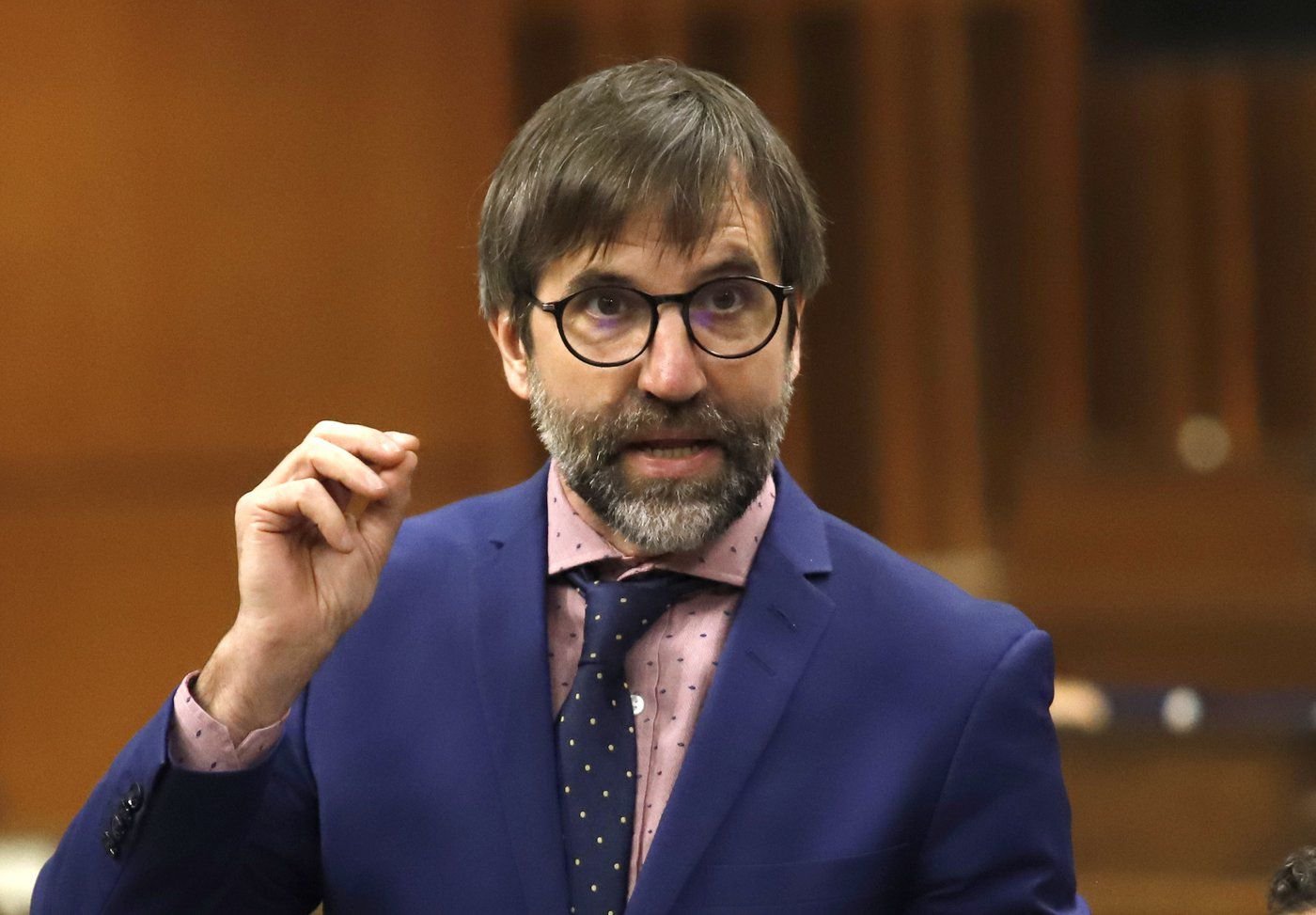Releasing treated oilsands tailings into the environment isn't the only solution being considered to clean up the massive toxic ponds in northern Alberta, federal Environment Minister Steven Guilbeault says.
Guilbeault said Wednesday that even though his government is developing regulations on how the tailings could be drained into the Athabasca River, other solutions are under review.
"We've never said that this is the only solution we're contemplating," he said. "We haven't ruled out the possibility of finding technical solutions to tailings ponds issues."
Guilbeault's comments came as investigators from UNESCO arrived in Alberta to consider threats to Wood Buffalo National Park, Canada's largest. The investigators are to assess whether federal and provincial efforts to stop the park's environmental slide are enough to prevent the UN agency from placing the park on its list of World Heritage Sites In Danger — a move the body has already called "likely."
One of those threats is the tailings ponds, adjacent to the Athabasca River that flows into the park and the vast freshwater delta it protects.
First Nations and environmental groups worry that the Alberta and federal governments have already decided that treating and releasing the water into that river is the way to go. Not so, Guilbeault said.
"We are being told by some that the only solution is to decontaminate the water and discharge it into the river. We're certainly not taking that for cash," he said.
"This is one of the options, but not the only option."
The government is developing regulations in case releasing treating water is found to be the best answer. Regulations take time to develop, and Guilbeault said something has to be ready by 2025 when the current ponds will run out of capacity.
Any releases would have to be of drinking-water quality, he said. They would also have to be approved in Ottawa.
"That can't happen unless the federal government authorizes it."
He said other solutions, such as decontaminating the water and recycling all of it back into operations, are being looked at. Other proposed solutions involve injecting the water underground.
"Something must be done," Guilbeault said. "This has gone unaddressed long enough."
Guilbeault said evidence is mounting that the tailings are beginning to contaminate nearby ground and surface water.
Whatever solution is found will have to work on a massive scale. The ponds currently hold about 1.4 trillion litres of contaminated water and continue to grow, impeding efforts to reclaim the mines.
Guilbeault said Environment Canada is consulting with industry and First Nations.
"The solution will not be decided by industry," he said.
In a series of tweets, Alberta Environment Minister Whitney Issik said the province has the situation in hand.
"Albertans and Canadians need to know that the Lower Athabasca Oil Sands area is one of the most monitored and studied regions on the planet," she wrote.
Documents leaked earlier this year to The Canadian Press detailing results of a survey done on provincial environmental monitoring scientists suggest they still don't believe Alberta has a good grasp of the overall impacts of the oilsands.
This report by The Canadian Press was first published Aug. 17, 2022.





Comments